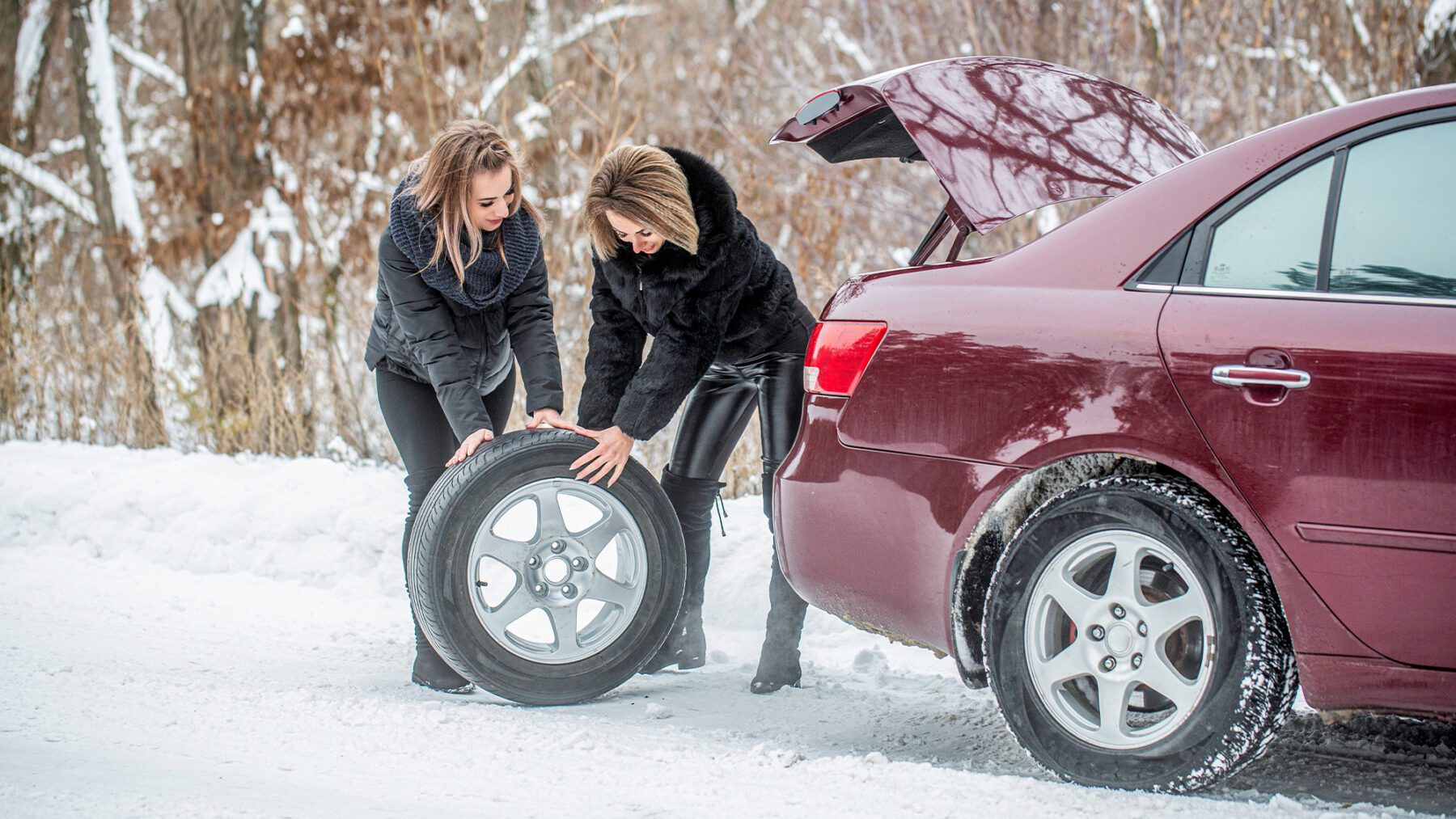Benefits of Proper Tire Inflation and Condition for Winter


Winter brings a host of challenges for drivers, and one of the most important factors for safety and performance during the colder months is your tires. Proper tire inflation plays a significant role in how well your vehicle handles icy roads and frigid temperatures.
Maintaining the right tire pressure isn’t just about avoiding flats. It ensures your car performs optimally, reducing the risk of accidents and improving fuel efficiency. This post will highlight why proper tire inflation is especially crucial for winter and how to keep your tires in the best condition.
The Impact of Proper Tire Inflation on Winter Driving
Correct tire inflation has a direct impact on your car’s performance, safety, and overall driving experience. Tires that are inflated correctly can better handle the challenges that winter weather brings, such as wet, icy, or snow-covered roads. The proper tire inflation ensures that your tires make adequate contact with the road, providing better traction. In fact, tire pressure has been shown to influence stopping distance and handling in icy conditions.
When temperatures drop, tire pressure tends to decrease because air contracts. Without maintaining the proper air pressure for tires, you may experience poor handling and reduced performance in winter conditions. It’s essential to check your tire pressure regularly during winter months to ensure it remains within the recommended range.
Here are some benefits of proper tire inflation during the winter season:
- Improved traction: Tires with proper inflation grip the road better, especially when roads are slick.
- Better fuel efficiency: Properly inflated tires reduce rolling resistance, which can lead to better gas mileage.
- Longer tire life: Maintaining the right tire pressure prevents excessive wear and extends the lifespan of your tires.
Maintaining Proper Tire Pressure in Winter
- Check pressure regularly: It’s recommended to check tire pressure at least once a month during winter. Even if you don’t notice any obvious issues, changes in air temperature can affect tire pressure.
- Use a reliable tire gauge: Accurate readings ensure you’re inflating your tires to the correct PSI.
- Know your car’s specifications: Every vehicle has a recommended PSI listed in the owner’s manual or on a sticker inside the driver’s side door frame. This is the proper air pressure for tires.
Preparing Tires for Winter Weather
- Winter tires are made from a special rubber compound that remains flexible in cold weather, offering better grip. They also have deeper treads designed to expel snow and improve traction.
- All-season tires are fine for mild winter conditions but may not offer the same performance in heavy snow or icy roads.
The Importance of Tire Condition in Winter
- Check tread depth: Tires with adequate tread depth provide better grip in snowy and icy conditions. The general rule is that tires should have at least 2/32 inches of tread depth. However, for winter driving, it’s a good idea to have more tread to improve traction.
- Inspect for damage: Regularly inspect your tires for cuts, punctures, or sidewall bulges. Any visible damage can compromise the integrity of your tires and reduce their performance.
- Look for uneven wear: Uneven wear could be a sign of alignment issues or an imbalance in your tire rotation. These problems can affect the way your car handles and can make driving in winter conditions more dangerous.
- Rotate your tires regularly: Regular tire rotation helps ensure even wear across all tires, which improves handling and traction, especially in winter. Rotate your tires every 6,000 to 8,000 miles or as recommended by your vehicle’s manual.
- Consider winter tires: If you live in an area with harsh winters, switching to winter tires can provide better grip and stability. Winter tires have deeper treads and special rubber compounds designed to stay flexible in low temperatures, which helps with traction on snow and ice.
- Check tire age: Tires naturally degrade over time, even if they look fine externally. Most tires are safe for about six years; after that, the rubber can harden, reducing traction. Check your tire’s manufacturing date (usually found on the sidewall) and replace older tires if needed.
- Balance your tires: Properly balanced tires reduce vibrations and help maintain even tread wear. If you feel unusual vibrations or pulling while driving, it might indicate that your tires need balancing. This is particularly important for winter driving, where stability is crucial.
- Clean out tire treads: Snow, ice, rocks, and debris can get stuck in the tire treads, reducing traction and increasing the risk of slipping. Check your tire treads regularly and remove any buildup to ensure optimal grip.
Regular Tire Rotation and Alignment Checks
Tire rotation is an often overlooked but crucial part of winter tire care. Regularly rotating your tires helps ensure even wear across all four tires, which extends their lifespan and helps maintain balanced handling. It’s also important to check your vehicle’s alignment to avoid uneven tire wear that can be exacerbated by harsh winter conditions.
Rotating your tires every 5,000 to 8,000 miles or as recommended by your vehicle’s manual helps evenly distribute the wear on all four tires. This is especially important if you have front-wheel drive, as the front tires often wear out faster.
Misalignment can cause uneven tire wear, which makes your vehicle harder to control and reduces traction. A misaligned car will cause one or more tires to wear out faster than others, increasing your risk of tire failure during winter weather.
By maintaining proper rotation and alignment, you ensure that your tires wear evenly and continue to provide maximum traction, which is especially important when roads are slick and icy.
Tire Pressure Monitoring Systems (TPMS)
Many modern vehicles are equipped with a Tire Pressure Monitoring System (TPMS) that alerts you when your tire pressure drops below the recommended level. While TPMS can be a helpful tool for keeping your tire pressure in check, it’s important to understand that it’s not a substitute for regular tire pressure checks.
TPMS typically activates when tire pressure is at least 25% below the manufacturer’s recommended levels, but tire pressure changes are often subtle, and it’s essential to stay proactive about maintaining proper tire inflation.
- TPMS alerts: If your vehicle has TPMS, make sure to pay attention to the alerts. However, don’t rely solely on the system to maintain proper tire inflation. It’s a good idea to check tire pressure manually to ensure accuracy.
- Regular monitoring: Even with TPMS, continue to check your tire pressure regularly, especially as outdoor temperatures fluctuate during the winter months. Keep in mind that your tire pressure can change gradually over time, and correct tire inflation is essential for winter driving.
Ensure Winter Safety with Proper Tire Inflation
Proper tire inflation plays an essential role in keeping you safe on winter roads. When your tires are correctly inflated, they provide better traction, improve fuel efficiency, and increase your vehicle’s overall performance. Tires in good condition, combined with proper tire inflation, can help you navigate snow, ice, and other challenging weather conditions with confidence. Make tire care a priority this winter season to ensure that your vehicle stays in top shape.
If you’re in need of tire maintenance, or any other car service, HEART Auto Care is here to help. Visit us online at HEART Auto Care for more information or contact us for any questions related to tire inflation and maintenance










